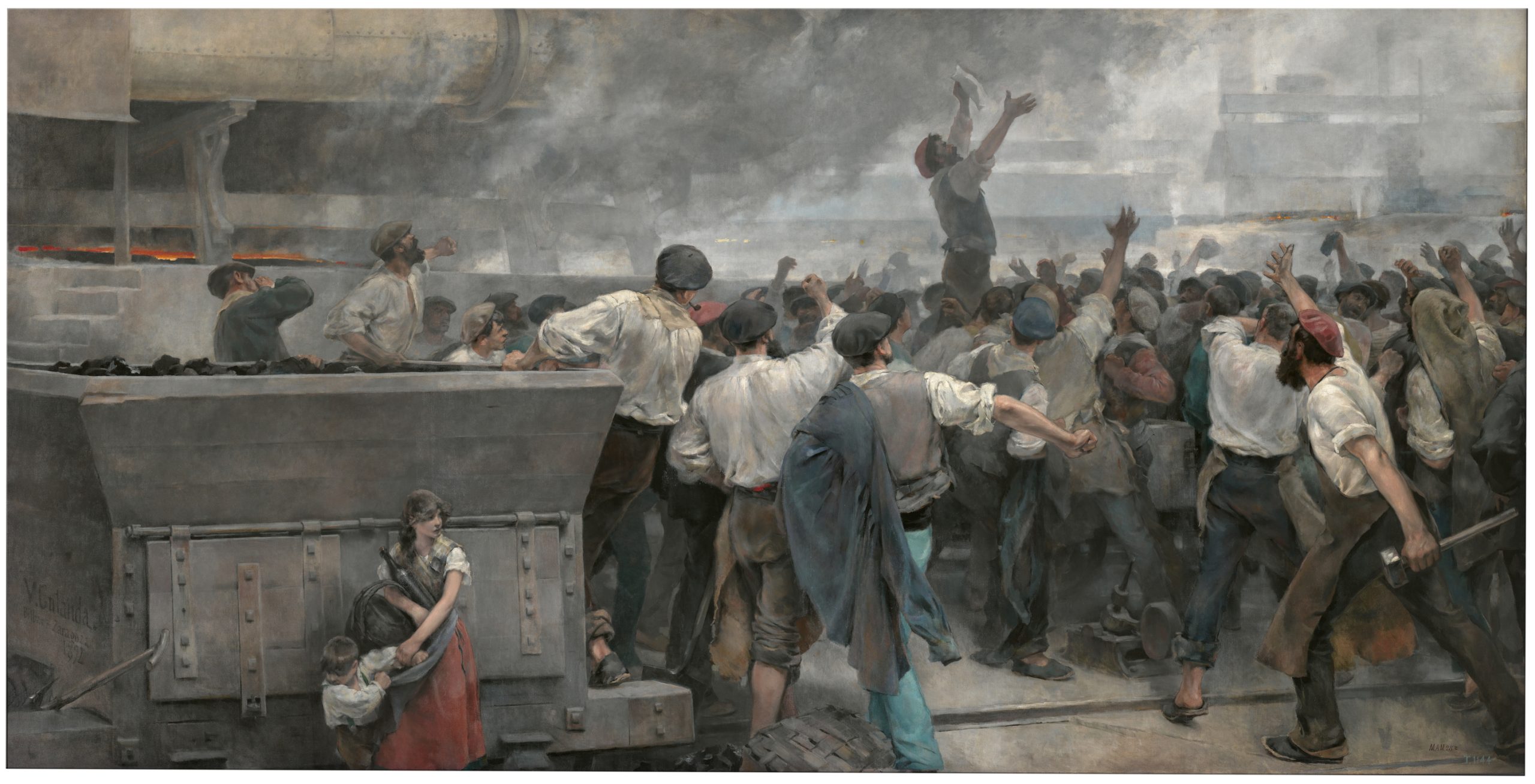Welcome to One Fine Show, where Observer highlights a recently opened exhibition at a museum outside of New York City—a place we know and love that already receives plenty of attention.
Madrid is a town that bursts with so much art that at times it can feel like the eye is being torn in a thousand different directions, as it is upon seeing Pablo Picasso’s Guernica (1937), which is also there. Even my hotel, the Hotel Montera, felt like it was bursting at the seams with energetic contemporary art in all the public areas, including a 25-meter-tall canvas located on the interior of the glass elevator that takes guests up to reception from the busy street, further driving home the idea that in Spain art and life are intertwined.
A similar message infuses an excellent new show at the Prado, “Art and Social Change in Spain (1885-1910),” which gathers almost 300 works, many never before exhibited, with special emphasis on the country’s tradition of social painting.
These works sought to highlight and examine the lives of Spain’s lower classes, and across multiple floors they are grouped by subject, some examining rural labor, some the new industrial proletariat and others the difficult life of the fisherman. Women’s work and prostitution are showcased in ways that had hardly been explored in public before. Just as moving are the depictions of accidents at work, death on the job and the strikes and protests that sought better working conditions—and would, in their way, lead to the country’s bloody civil war just a few decades later.
SEE ALSO: These are the Banksy Animals in London Still On View
The topics under consideration in these works are compelling, and many also sing in the execution. José Jiménez Aranda’s A Tragic Event (1890) shows the scene at a construction accident as onlookers react around scaffolding that looks too familiar to a New Yorker. Some crane their necks; others can’t bear to look, with Aranda having robbed the real-world viewer of such a choice, thanks to the crowd. Also astounding from the section that involves the people and their relationship to religion is Burial in the Countryside (1900) by a young Picasso, though it looks like it might have been done by Edvard Munch.
Vicente Cutanda’s A Workers’ Strike in Vizcaya (1892) is epic in size and framing, like the climax of a movie where we don’t need to see the rest of it. This is evident from the woman huddling near the coal with a child and the striking man being lifted into the air like steam.
When it comes to technique, some of the other works border on the prosaic and maybe a little preachy. Walking through the galleries, I was occasionally reminded of the Socialist Realism works I’ve encountered in Moscow, with these being the black-and-white “problem” section of the infomercial: there’s got to be a better way!
But if these were made for broad appeal, what is striking about these works in the modern climate is that the content of these paintings was thought to be revolutionary, not the demographics of the artists who made them. If contemporary art luxuriates in the secret handshake that I have an art history degree, these tackled the problems of the day without irony or subtlety and remain stirring.
“Art and Social Change in Spain (1885-1910)” is on view at the Museo del Prado through September 22.

